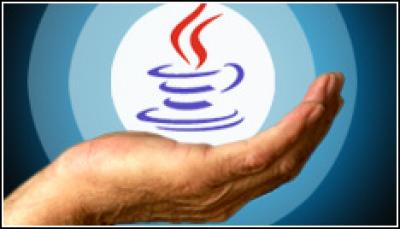In his first public speaking engagement since Oracle’s acquisition of Sun Microsystems, Java creator James Gosling assured the Java faithful that Java is safe and secure in Oracle’s hands.
Gosling delivered the opening keynote at The Server Side Java Symposium (TSSJS) here on 17 March, saying he was “encouraged” by the direction Oracle is taking with Java and, “I don’t think anybody in this room has anything to worry about” regarding the future of Java. Particularly, with his talk entitled, “Java Today and Tomorrow,” attendees were looking for some indication of where Oracle might make changes to Java or disrupt the status quo. However, Gosling assured them that the business of Java as well as the ongoing technological innovation of the Java platform continues apace.
Indeed, among the first things Gosling did was deliver an update on the use of Java worldwide. For instance, the JRE (Java Runtime Environment) is downloaded 15 million times a week, Gosling said, except for spikes such as when Brazilians file their taxes annually—which is done via a Java application. Moreover, there are 10 billion Java-enabled devices, 1 billion Java-enabled desktops, 100 million Java-enabled TV devices, 2.6 billion Java-enabled mobile devices, 5.5 billion Java smart cards and more than 6.5 million professional Java developers, Gosling said.
Regarding Java desktops, Gosling said these desktops are “usually the front end to a back end using a service-oriented architecture … where the front end has to be more sophisticated than AJAX.”
Despite the TSSJS event’s focus on enterprise Java, Gosling said Oracle also is working on Java for the desktop, and in embedded, mobile, high-performance computing and other systems. Yet, “the unifying principle of all of it is the network; the network ties it all together.”
Paying homage to his enterprise Java audience, Gosling said Java EE 6 (Java Platform, Enterprise Edition 6) is the foundation of the next generation of enterprise software. Gosling applauded the Java community and leading vendors for banding together to get the Java EE 6 specification approved in November 2009 and for delivering a bunch of new and updated Java APIs.
Java EE 6 focuses on modularity and introduces the concept of profiles, Gosling said. As yet, there are but two profiles, the full profile and the Web profile. The Web profile is the first Java EE profile to be defined. It is a “fully functional midsize stack for modern Web application development,” Gosling said. “We wanted to focus on the Web tier in this release,” he said. “We wanted to create a level playing field for Web frameworks.”
Moreover, Gosling said the “pluggability” and extensibility in the new version of the enterprise Java platform comes from the OSGi (Open Services Gateway Initiative) modularity system at its foundation.
And Gosling welcomed the addition of dependency injection into the Java EE 6 specification. “Dependency injection allows you to inject dependencies in your code and you’ll be able to use the annotations features in JDK 5 [Java
Development Kit 5] to factor out boilerplate,” he said. In addition, “all the pain of EJB [Enterprise JavaBeans] has just gone away,” he added. Ironically, just a few years ago these same issues were the source of bitter battles within the Java community, with visionaries such as Rod Johnson of VMware’s SpringSource division leading the charge to make changes to the Java specification.

Meanwhile, Gosling gave an update on the GlassFish application server, which has reached Version 3 and is the reference implementation for Java EE 6. GlassFish also is the world’s most downloaded application server, at 1 million downloads per month, he said. Gosling also noted that Oracle continues to advance its NetBeans IDE (integrated development environment), which is targeted for enterprise, mobile and desktop development.
“The thing that’s nice about Java is that it’s a two-level specification,” Gosling said. “There’s the Java language, but the magic is in the VM [virtual machine] and how it works with other languages like Scala, Ruby, Groovy, Python, PHP, JavaScript, JavaFX and a host of other languages. Literally hundreds of languages can run on top of the JVM [Java VM]. It’s a nice way to develop your app using all kinds of different tools in all kinds of different ways.”
Gosling also said he expects to still “be coding in the year 2030,” although he expects that he will be working on massively parallel systems with up to 5,220 cores if things progress as they have been.
Regarding the future of the Java language over the next five to 10 years, Gosling said developers should look for stability, with steady language enhancements that bring the entire developer base forward.
Gosling also said the Java Store that Sun touted so highly when it was first announced in 2009 hit a slight roadblock when the company’s accountants told the engineering team they had to implement a system to handle taxation of items sold in the store.
“We said, Why can’t we just be eBay?” Gosling said. “But we’ve come up with a viable tax solution and I expect that we will have a new release of the Java Store for developers coming out any day now. The feedback from the developer community has been really enthusiastic, because they’ve seen what happened with [the] iTunes store and with all the Java devices out there that [are] another couple of digits in the market size [as compared with iTunes].”





